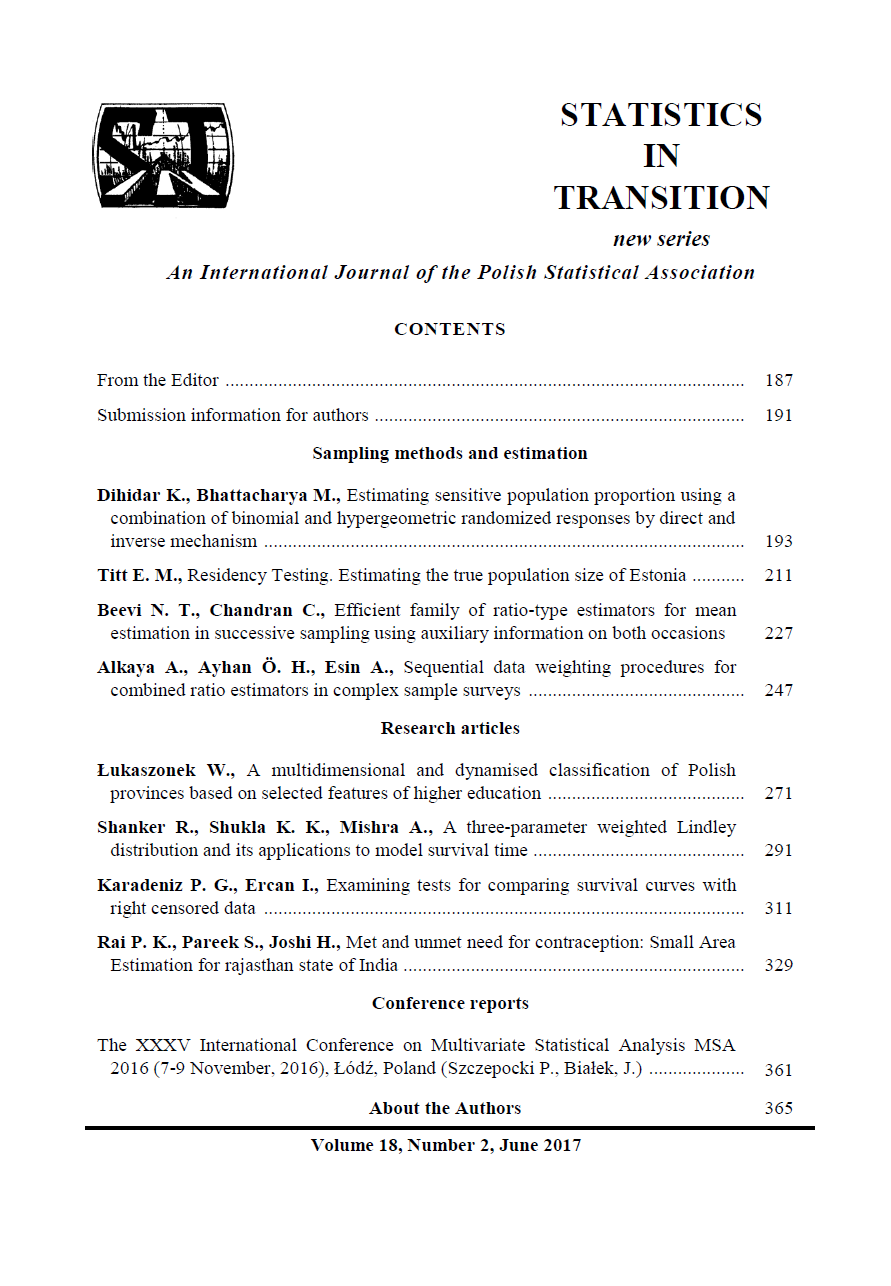ARTICLE
ABSTRACT
The number of residents or population size is important for all countries. Nowadays in many countries a series of registers have been created, which can be used for assessing the population size. The residency index is a tool created for estimating the under- and over-coverage of population census and calculation of proper population size. For this aim the concept of a sign of life – a binary variable depending on register i, person j and year k has been introduced showing if the person was active in the register in a given year. The weighted sum of signs of life indicates the probability that the person belongs to the set of residents in a given year. To improve the stability of the index a linear combination of the previous value of the index and the sum of signs of life is used. Necessary parameters were estimated using empirical data
KEYWORDS
population size, under-coverage of census, sign of life
REFERENCES
Register-based statistics in the Nordic countries - Review of best practices with focus on population and social statistics (United Nations publication). http://unstats.un.org/unsd/censuskb20/KnowledgebaseArticle10220.aspx.
TIIT, E.-M., (2012). 2011. aasta rahva ja eluruumide loenduse alakaetuse hinnang. Eesti Statistika Kvartalikiri, 4/12, Quarterly Bulletin of Statistics Estonia, 4. 12, pp. 110–119.
TIIT, E.-M., MERES, K., VÄHI, M., (2012). Rahvaloenduse üldkogumi hindamine. Eesti Statistika Kvartalikiri, 3, pp. 79–108.
TIIT, E.-M., (2014), 2011. aasta rahva ja eluruumide loendus, Metoodika, 76+19 lk.Main Results of the UNECE-UNSD Survey on the 2010 Round of Population and Housing Censuses (ECE/CES/GE.41/2009/25).
TIIT, E.-M., (2015). The register-based population and housing census: methodology and developments thereof. Quarterly Bulletin of Statistics Estonia. 3, 15, pp. 42–64.
MAASING, ETHEL, (2015). Eesti alaliste elanike määratlemine registripohises loenduses. http://dspace.utlib.ee/dspace;/handle/10062/47557.
MAASING, ETHEL, (2015). First results in determining permanent residency status in register-based census,banocoss2015/Presentations?preview=#!/preview/149296295/170626623/ Maasing _Abstract.pdf.
TIIT, E.-M., (2015). Residence testing using registers – conceptual and methodological problems,https://wiki.helsinki.fi/display/banocoss2015/Presentations?preview=#!/previe w/ 149296295/170626640/Tiit_Abstract.pdf.
LI-CHU, ZHANG, JOHN, DUNNE, Census like population size estimation based on administrative data https://wiki.helsinki.fi/display/banocoss2015/Presentations?preview=/149296295/172987273/CensuslikePopulationSize.pdf.
ZADEH, L. A., (1965). "Fuzzy sets", Information and Control, 8 (3), pp. 338–353.
KLAUA, D., (1965) Über einen Ansatz zur mehrwertigen Mengenlehre. Monatsb,Deutsch, Akad. Wiss, Berlin 7, pp. 859–876
